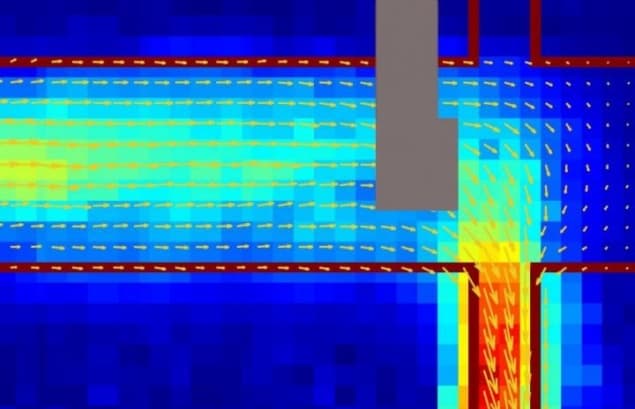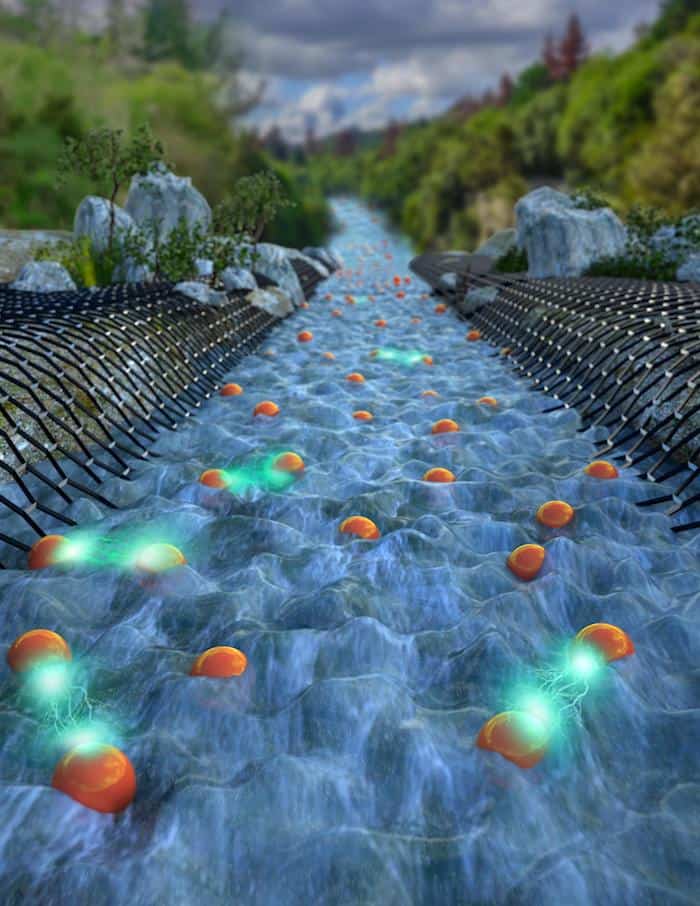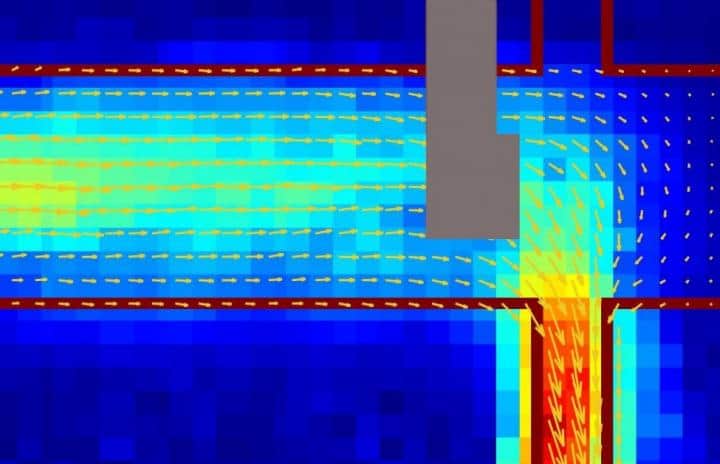
Walsworth and Yacoby research groups, Harvard and University of Maryland
A team led by researchers from Harvard University and the University of Maryland in the US has used defects in diamond to map the magnetic field generated by electrical currents in graphene. Their experiments reveal that currents in this atomically-thin form of carbon flow like a viscous fluid – a result that could provide fresh insights into the collective behaviour of electrons in strongly-interacting quantum systems.
Graphene has many exceptional electrical properties. Among them is the fact that, at the point where its conduction and valence bands just touch each other (the Dirac point), it can support currents composed of electrons and an equal number of positively-charged holes, rather than electrons alone. In the present work, Ronald Walsworth, Amir Yacoby and colleagues set out to establish whether these electron-hole plasmas (or Dirac fluids, as they are also known) flow smoothly, like electrons travelling through a metallic wire, or unevenly like water running through a pipe.
Mapping the local magnetic field
Since two-dimensional systems like graphene exhibit a one-to-one relationship between current density and magnetic field, Walsworth, Yacoby and colleagues knew they could extract the current flow pattern by mapping the magnetic field near their graphene sample. To do this, they turned to nitrogen-vacancy (NV) centres in diamond.
NV centres are defects that arise when two neighbouring carbon atoms in diamond’s crystalline lattice are replaced by a nitrogen atom and an empty lattice site. They possess numerous quantum properties, including spin and the ability to emit single photons. Their energy levels are also highly sensitive to magnetic fields – meaning that when an NV centre is excited with a laser pulse, the intensity of the fluorescence it emits will change in response to fluctuations in the local magnetic field.
The team exploited these properties of NV centres in two ways. First, they ran a nanostructured diamond tip containing a single NV centre across a narrow (1-1.5 micron wide) conducting channel in graphene. This enabled them to characterize the magnetic field along a narrow line across the graphene device, revealing changes in the pattern of current flow with a spatial resolution of around 50 nm.
While this approach gave them a detailed view of current flow, it was also time-consuming, and therefore impractical for use in mapping the flow across the experiment’s entire two-dimensional field of view. To get a wider perspective, the team placed a graphene sample on a diamond sheet that contained many NV centres near its surface. They then used a camera to image the magnetic field distribution in the sample, as recorded by the fluorescence of the NV centres.
This technique produced a complete, two-dimensional snapshot of the pattern of current flowing through the graphene at a single moment in time. While the snapshot has a lower spatial resolution (around 400 nm) than the image obtained from a single NV centre, it gives an overview of how the current is flowing in the entire sample, rather than in a single narrow channel, at a given moment.
Dirac fluid current density develops parabolic profile
“Our two methods have now produced images revealing that the Dirac fluid current density develops a parabolic profile in which flow is fastest at the centre of the graphene sample and decreases at the edges – just as it is for water flowing in a pipe,” say study lead authors Mark Ku and Tony Zhou. While previous studies had shown that electrons can flow like water in graphene, they add, these other studies failed to confirm the presence of viscous flow in currents composed of Dirac fluids, which are characterized by strong interactions between the component particles. The researchers also note that they observed the viscous behaviour at room temperature, while previous experiments were restricted to colder temperatures.

Electrons flow like water in ultra-pure graphene
“The study of viscous hydrodynamic flow in highly pure electronic systems (like graphene) is important in condensed-matter physics because such behaviour is thought to play a role in strongly-interacting quantum matter in general,” Ku tells Physics World. “Our work opens up the exciting possibility of exploring phenomena like (hitherto unobserved) electronic turbulence, which is thought to play a role in the unusual electronic properties of high-temperature superconductors, for example.”
The study, which is detailed in Nature, also shows that magnetic field imaging with NV centres can reveal novel transport phenomena. This means that NV defects could be used to study other high-quality materials that may display electron hydrodynamics, as well as other types of exotic electronic transport behaviour (such as topological superconductivity). Understanding viscous electronic flow may even allow researchers to exploit this behaviour in new microelectronics devices made from graphene and related materials.
